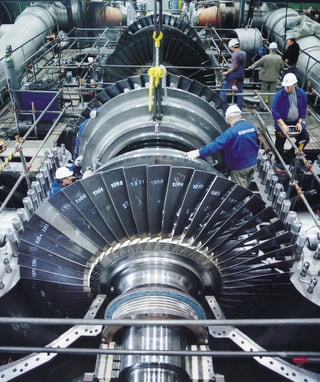This post is one in a series featuring the complete slate of advanced energy technologies outlined in the report This Is Advanced Energy.

Credit: SunPower
Solar photovoltaic (PV) power systems convert sunlight directly into electricity. PV modules (panels) produce direct current (DC), which is converted to grid-compatible alternating current (AC) through an inverter. Utility-scale PV installations are typically connected to the transmission grid, and range from about 1 MW to several hundred MW. Since PV can make use of diffuse or direct sunlight it can be installed anywhere. The majority of large solar farms use ground- mounted at-plate PV panels, which can be installed at a fixed-tilt or can use single-axis or dual-axis tracking systems that follow the sun. Tracking increases electricity production over the course of the day, but also increases costs. Concentrating PV (CPV) is a variation on at plate PV that uses arrays of lenses mounted in front of small PV cells to concentrate the sunlight reaching the cells. CPV requires dual-axis tracking and is more efficient, but more expensive, than regular at plate PV, so it is best suited to very sunny locations.



 It’s no mystery that companies want advanced energy—they’re announcing major projects, making large purchases, and setting public goals. Even for companies without a specific target, advanced energy presents an attractive option to control and lower energy costs. Unsurprisingly, companies are pursuing advanced energy in growing numbers, with a record 3,100 MW of wind power purchases in 2015 signed by corporate customers—double the previous year.
It’s no mystery that companies want advanced energy—they’re announcing major projects, making large purchases, and setting public goals. Even for companies without a specific target, advanced energy presents an attractive option to control and lower energy costs. Unsurprisingly, companies are pursuing advanced energy in growing numbers, with a record 3,100 MW of wind power purchases in 2015 signed by corporate customers—double the previous year.